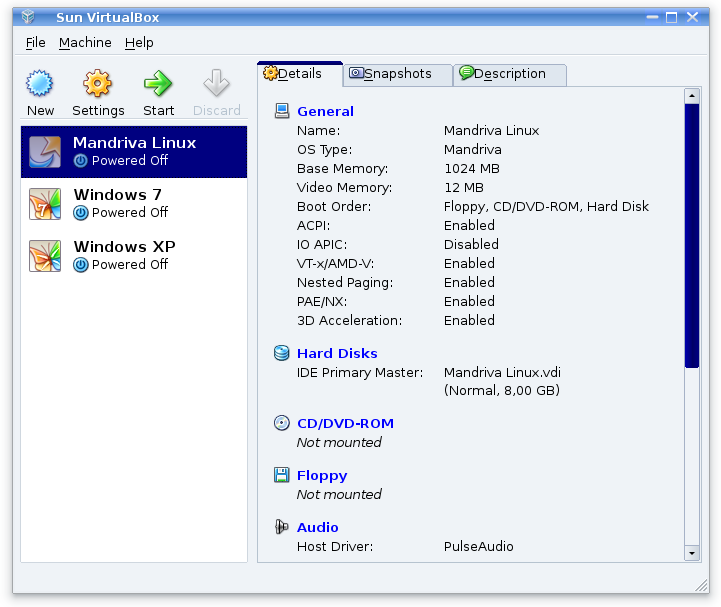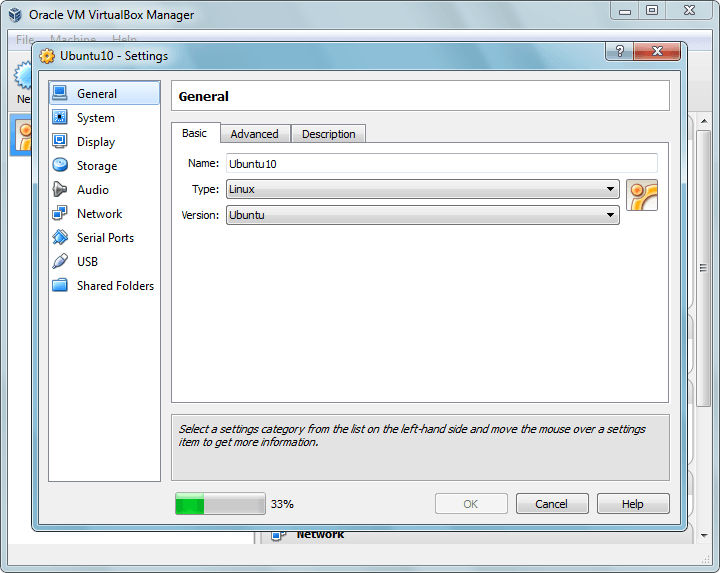

- #Whst is virtualbox interface windows 10
- #Whst is virtualbox interface software
- #Whst is virtualbox interface windows
Instead, it allows users to manually transfer the folders in their host OSs with PowerShell or a Windows GUI and allow specified users to access them in the guest operating system. However, although shared folders are valuable tools that users can leverage to share useful files between the host and guest OSs, Hyper-V doesn’t include the feature. File Sharingīoth hypervisors allow users to leverage drag-and-drop features between the physical host’s OS and the guest operating system. The image preserves the VM, allowing users to return to the VM and continue using it from where they have left it.

VirtualBox uses the same technology, albeit with a different name called snapshots, to take a VM image in its current state. The VM can revert quickly to the previous state if a problem arises due to future changes. For example, Hyper-V uses checkpoints to enable users to save the existing state of a VM easily. Checkpoints and Snapshotsīoth platforms allow users to take an image of the VM in its current status. There are a few similarities and differences between Hyper-V and VirtualBox regarding their functionalities. This often introduces latency issues that end up affecting its performance. However, VirtualBox also needs to access the CPU, RAM, and network via the host’s OS, which has exclusive access to the physical hardware. This makes it a perfect tool for end-user productivity. VirtualBox, in contrast, is a type 2 hypervisor and can allow users to have quick access to the alternative guest OS alongside the primary host’s operating system. Hyper-V provides high-performance VMs since it is a type 1 hypervisor and can access the physical hardware directly, without necessarily loading the underlying hardware’s OS. Hyper-V and VirtualBox can both serve as a basis for server virtualization in small to mid-sized businesses (SMBs), but they also have distinct performances that set them apart. However, although Hyper-V also integrates seamlessly with Windows-based infrastructures, it isn’t as simple to set up as VirtualBox. You can also achieve the same user experience with VirtualBox, which provides a VM creation wizard. Once activated, you can begin creating VMs via its Quick Create VM creation option or use a more advanced process through the Hyper-V Manager. To start using Hyper-V, you must enable it through the PowerShell or Windows features.
#Whst is virtualbox interface windows 10
However, the company doesn’t provide this feature with Windows 10 or Windows 11 Home editions. Microsoft has integrated Hyper-V with Windows 10 and Windows 11 for Pro, Education, and Enterprise editions. Unlike Hyper-V, which takes control of the BIOS or UEFI automatically when the computer starts, users can start or stop VirtualBox manually on demand. They support guest VMs by coordinating calls for the CPU, memory, and storage resources through the underlying physical host’s OS. A type 2 hypervisor-also called a hosted hypervisor-runs on top of an OS, unlike type 1 hypervisors that usually execute on the underlying physical hardware. VMs can then be initiated manually by users or automatically, depending on the Hyper-V’s settings.

When a physical host starts, usually a Hyper-V takes control from the basic input-output system (BIOS) or unified extensible firmware interface (UEFI) and initiates the management OS. Hyper-V is a classic example of a type 1 hypervisor. For this reason, type 1 hypervisors usually take the place of the host OS. A type 1 hypervisor runs directly on the underlying physical hardware, interacting directly with the processor, RAM, and storage. There are two basic categories of hypervisors: The guest VMs effectively share the physical host’s computing resources, such as the processor cycles, RAM, network bandwidth, and storage. It decouples the OSs and applications from the underlying physical server, enabling it to run multiple virtual machines (VMs) as guests.
#Whst is virtualbox interface software
Hypervisors: Differences between Hyper-V and VirtualBoxĪ hypervisor is a crucial software that makes virtualization possible. VirtualBox and why Parallels® RAS is another alternative-so you can make an informed choice. In this post, we’ll explore the differences between Hyper-V vs. There are several virtualization options provided by various vendors for Windows users, each with its own functionality, ease-of-use, and performance capabilities. It’s a fundamental tool in the virtualization world that powers the “anything-as-a-service” models in cloud computing. A hypervisor allows multiple operating systems (OSs) and applications to run on the same physical host, allowing organizations to consolidate IT resources, lower costs, and increase efficiency.


 0 kommentar(er)
0 kommentar(er)
